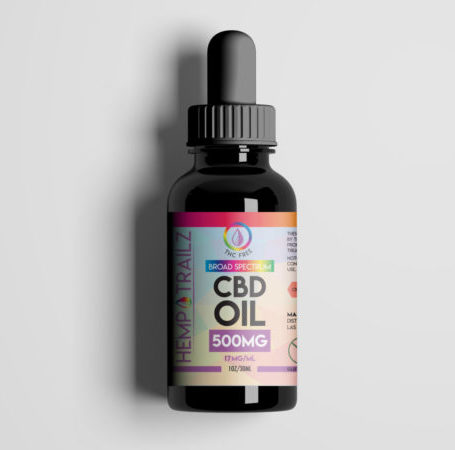CBD Dosage: Figuring Out How Much to Take By Healthline.com

We include products we think are useful for our readers. If you buy through links on this page, we may earn a small commission. Here’s our process.
You’ve probably heard about the health benefits of CBD, but how much should you take to feel those?
Cannabidiol, or CBD, is one of over 60 active compounds in the cannabis plant. These active compounds, known as cannabinoids, affect your body in many different ways.
CBD isn’t psychoactive — meaning it won’t get you “high.” Instead, research suggests that it may help:
- reduce anxiety and depression
- improve sleep
- reduce seizures in people with epilepsy
- soothe pain and inflammation
- improve heart health
- improve symptoms of inflammatory bowel disease (IBD)
No matter what condition you’re trying to treat with CBD, giving yourself an adequate dosage is key — or it might not work for you.
It can be tough to figure out how much CBD you should take, as CBD isn’t currently regulated by the Food and Drug Administration (FDA), and there are no official recommended dosages.
Here’s what you need to know about figuring out how much CBD to take.
CBD has been the subject of a lot of discussion and research over the past few years.
As this 2017 reviewTrusted Source shows, a great deal of research has found that it’s a relatively safe treatment. The studies analyzed in that review didn’t show that there’s one universal dosage of CBD that everyone should take. Instead, it underscored the fact that different people (and, in the animal studies, different animals) respond to different dosages of CBD. Most of the human studies use dosages anywhere between 20 and 1,500 milligrams (mg) per day.
It’s worth remembering that there’s still a lot about CBD that we don’t know. As the cannabis industry grows, researchers will likely conduct more studies on cannabis, including marijuana and hemp, and its derivatives.
The amount of CBD you should take depends on a range of factors, including:
- your body weight
- the condition you’re treating
- your individual body chemistry
- the concentration of CBD in each pill, capsule, drop, or gummy
In other words, there are a lot of variables that go into deciding how much CBD to take. Before trying CBD, be sure to talk to your doctor about an appropriate dosage and any potential risks. If your doctor tells you how much to use, stick to their recommendation. This is especially important if you’re taking a prescription medication that contains CBD, such as Epidiolex, a form of seizure medication.
If your doctor doesn’t provide a recommendation, it’s best to start with a smaller dosage and gradually increase it. This could mean starting with 20 to 40 mg a day. After a week, increase this amount by 5 mg. Continue this until you feel that it’s effectively treating your symptoms.
For example, you might start off with 40 mg to treat severe pain. You can take 40 mg on days when you’re in a lot of pain. After a week, you increase it to 45 mg, and after a second week, you use 50 mg. At this point, you might feel that your pain is bearable.
It might be wise to keep track of how much CBD you’re taking and whether your symptoms are getting better. Write it down on paper or in a notes app on your phone.
SUMMARY Start with a small dosage of CBD and increase slowly until you reach your desired effect. Your ideal dosage of CBD depends on a lot of factors, like your body weight, body chemistry, the condition you’re treating, and the concentration of CBD in the product you’re using.
How to calculate dosage
Some products, such as CBD gummies, capsules, or pills, tell you how much is in a single serving. For example, the packaging on a bottle of CBD capsules might indicate that there are 5 mg of CBD per capsule.
If you’re using CBD oil, it’ll likely come in a dropper bottle. The packaging might specify how much CBD is in a single drop. From there, you can figure out how many drops you need to use.
Sometimes it’s harder to figure out how much CBD is in one drop because the packaging specifies the total amount of CBD in the entire bottle, but not the amount that will be in a single drop.
One drop is about 0.05 milliliters (mL). That is, not a full dropper — just a single drop.
This means that a 10-mL bottle of CBD oil contains 200 drops. And if the packaging for that 10-mL bottle says that the bottle contains 1,000 mg of CBD, each drop will contain about 5 mg of CBD.
So, to have 20 mg of that type of CBD oil, you should take four drops.
A 2011 reviewTrusted Source on the safety and side effects of CBD found that continuous use of CBD, even in high doses like 1,500 mg a day, is tolerated well by humans.
A 2017 updateTrusted Source to this review also confirmed this. However, a 2019 study done on mice did raise some safety concerns about CBD’s potential for liver damage and its interactions with other medications.
If you’re currently taking medication and would like to try CBD, it’s essential to discuss this with your doctor.
There are very few known side effects of CBD. When side effects do occur, however, they may include diarrhea, appetite changes, and fatigue.
Possible side effects
- fatigue
- diarrhea
- changes in appetite
- changes in weight
If you’re looking for a quick and easy way to buy CBD, you can find many CBD brands online. But make sure you research each brand before purchasing. While pure, genuine CBD is considered safe, fake and low-quality products can be dangerous.
CBD isn’t regulated by the FDA, so it’s up to you to make sure that you’re only using high-quality products. Look for products from a reputable brand with third-party testing, and avoid companies that have a history of inaccurate labeling.
A 2018 report from the Centers for Disease Control and Prevention (CDC)Trusted Source noted that 52 Utah residents had bad reactions to certain CBD products. It turned out that most of them used products that included synthetic CBD. Some products contained no information about the manufacturer or its ingredients.
When it comes to working out which dosage of CBD you should use, talking to your doctor is your best bet. While not all doctors will be able to provide information on CBD — depending on the laws in your state — some may be able to help recommend dosages or high-quality brands. Speak with your doctor before trying CBD, especially if you’re currently taking any medications.
Want to learn more about CBD? Click here for more product reviews, recipes, and research-based articles about CBD from Healthline.
Is CBD legal? The 2018 Farm Bill removed hemp from the legal definition of marijuana in the Controlled Substances Act. This made some hemp-derived CBD products with less than 0.3% THC federally legal. However, CBD products containing more than 0.3% THC still fall under the legal definition of marijuana, making them federally illegal but legal under some state laws. Be sure to check state laws, especially when traveling. Also, keep in mind that the FDA has not approved nonprescription CBD products, and some products may be inaccurately labeled.
ORGINAL LINK HERE: https://www.healthline.com/health/cbd-dosage




